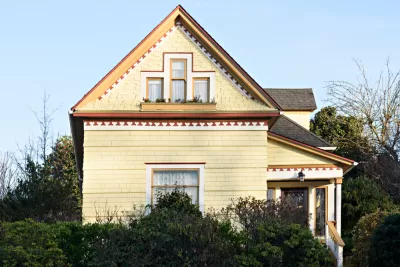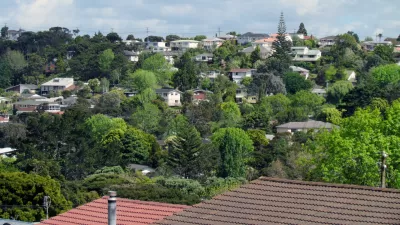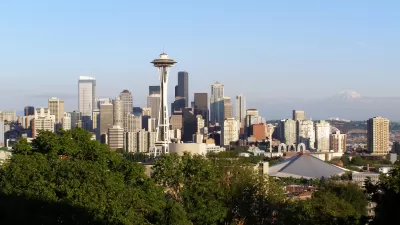In Seattle, most (88 percent) of the city's new housing is being developed in a few small, already dense areas around the city. Most of the city is reserved for single-family housing.

Mike Rosenberg takes a deep dive into zoning in the city of Seattle to examine how it has contributed to the city's skyrocketing residential real estate market. The questioned examined in the article is, "how much of Seattle’s housing is traditional, suburban-style single-family homes, and how that has affected our growth and housing prices."
Rosenberg's analysis finds that with 69 percent o fits residential lots devoted to single-family housing, Seattle's use of residential land is akin to much smaller cities, "[b]ut compared to other peer cities with expensive housing, Seattle generally devotes a lot more of its housing to single-family homes…"
After explaining the residential make-up of the city in other terms, Rosenberg digs into the concept of zoning, which is described as the "whole game" when it comes to housing. According to Rosenberg, because most of the city is limited to single-family zoning, and new buildings have only been added in already dense area, most of the city is not growing in the sense of the size and total of its buildings. That reality has implications for both the homeownership and rental markets, which Rosenberg examines in more detail in the article.
For more on potential changes to the land use scheme currently controlling the market in Seatte, see analysis from March of a proposal to expand the more dense "urban villages" where most of Seattle's growth is located as part of the city's Housing Affordability and Livability Agenda.
FULL STORY: Rapidly growing Seattle constrains new housing through widespread single-family zoning

Planetizen Federal Action Tracker
A weekly monitor of how Trump’s orders and actions are impacting planners and planning in America.

Maui's Vacation Rental Debate Turns Ugly
Verbal attacks, misinformation campaigns and fistfights plague a high-stakes debate to convert thousands of vacation rentals into long-term housing.

San Francisco Suspends Traffic Calming Amidst Record Deaths
Citing “a challenging fiscal landscape,” the city will cease the program on the heels of 42 traffic deaths, including 24 pedestrians.

Amtrak Rolls Out New Orleans to Alabama “Mardi Gras” Train
The new service will operate morning and evening departures between Mobile and New Orleans.

The Subversive Car-Free Guide to Trump's Great American Road Trip
Car-free ways to access Chicagoland’s best tourist attractions.

San Antonio and Austin are Fusing Into one Massive Megaregion
The region spanning the two central Texas cities is growing fast, posing challenges for local infrastructure and water supplies.
Urban Design for Planners 1: Software Tools
This six-course series explores essential urban design concepts using open source software and equips planners with the tools they need to participate fully in the urban design process.
Planning for Universal Design
Learn the tools for implementing Universal Design in planning regulations.
Heyer Gruel & Associates PA
JM Goldson LLC
Custer County Colorado
City of Camden Redevelopment Agency
City of Astoria
Transportation Research & Education Center (TREC) at Portland State University
Jefferson Parish Government
Camden Redevelopment Agency
City of Claremont




























